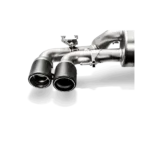Painting your car in your driveway can be a rewarding DIY project that saves you money and gives you a sense of accomplishment. However, achieving a professional-looking finish requires careful planning and execution. This article provides essential Car Painting Tips for a successful driveway paint job.
A successful DIY paint job starts with proper preparation. Thoroughly cleaning the car’s surface is crucial. Wash the car with soap and water, then use a wax and grease remover to eliminate any contaminants. Next, address any imperfections like rust, dents, or scratches. Sand these areas down, apply body filler if necessary, and prime them before painting. Masking off areas you don’t want painted, such as windows, trim, and lights, is also essential for a clean finish.
Choosing the right paint type and equipment is another critical factor. For driveway painting, single-stage paints like acrylic enamel or urethane are often preferred for their durability and ease of application. They offer a good balance between cost and quality. Invest in a quality HVLP (High Volume Low Pressure) spray gun for even paint distribution and minimal overspray. A portable car shelter or a structure made from 2x4s and plastic sheeting can help create a controlled environment, minimizing dust and bugs.
When you’re ready to paint, apply thin, even coats, allowing each coat to dry completely before applying the next. Multiple thin coats will result in a smoother finish than one thick coat. Be mindful of weather conditions – avoid painting in direct sunlight, high humidity, or windy conditions. Early morning or late afternoon are often the best times to paint, as there are fewer bugs and the temperature is more moderate. If painting outdoors, be aware of overspray and take precautions to protect surrounding areas. Wetting down the ground can help minimize dust, but avoid creating puddles.
After the final coat has dried, carefully remove the masking tape and inspect the finish. Wet sanding and polishing can help remove minor imperfections and achieve a glossy finish. Use fine-grit sandpaper and a rubbing compound, followed by polishing compound. Finally, apply a coat of wax to protect the new paint and enhance its shine.
Remember, safety is paramount when painting a car. Always wear appropriate personal protective equipment, including a respirator designed for paint fumes, gloves, and eye protection. Ensure adequate ventilation to prevent the buildup of harmful vapors. If using two-part paints containing isocyanates, be aware of the potential for allergic reactions and take extra precautions.
Painting your car in the driveway requires patience and attention to detail, but the results can be well worth the effort. By following these car painting tips and taking your time, you can achieve a finish you can be proud of.

